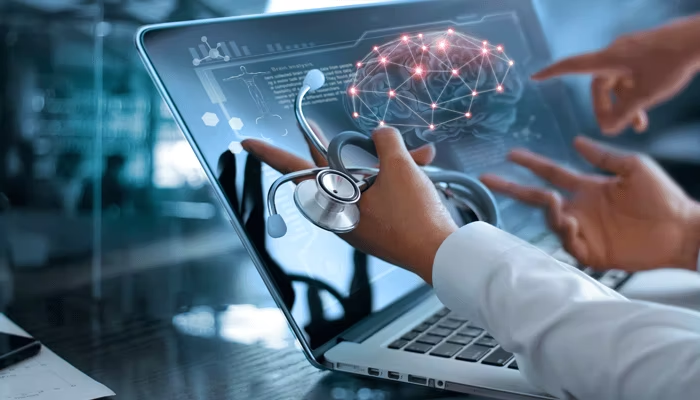This market growth is driven by various factors, including advancements in technology, the increasing prevalence of neurological disorders, a shift towards patient-centered care, and favorable insurance and reimbursement policies. Together, these factors contribute to the expansion of the market, improving the diagnosis and management of neurological conditions.
Neurodiagnostics is a specialized branch of medical diagnostics that focuses on evaluating and monitoring the structure and function of the nervous system. This field employs a wide array of techniques and technologies to assess both the central nervous system (brain and spinal cord) and the peripheral nervous system, which includes the body’s vast network of nerves. Common neurodiagnostic tools include:
- Electroencephalography (EEG): This test measures the brain’s electrical activity, helping diagnose epilepsy, brain tumors, and sleep disorders.
- Electromyography (EMG): EMG assesses the electrical activity of muscles and nerves, aiding in diagnosing neuromuscular disorders and nerve injuries.
- Nerve Conduction Studies (NCS): NCS evaluates the speed of electrical signals in nerves, helping diagnose nerve damage or related conditions.
- Evoked Potentials (EP): EP tests measure the brain or spinal cord’s response to stimuli, useful in diagnosing sensory pathway disorders.
- Polysomnography (PSG): This test monitors physiological parameters during sleep to diagnose sleep disorders such as sleep apnea.
- Transcranial Doppler Ultrasound (TCD): TCD uses ultrasound to assess blood flow in brain arteries, aiding in the diagnosis of stroke and vascular disorders.
These neurodiagnostic methods are crucial for diagnosing and managing a variety of neurological conditions, providing critical insights into the health and function of patients’ nervous systems.
Get A Free Sample of Our PDF Research Report : https://meditechinsights.com/neurodiagnostics-market/request-sample/
Neurodiagnostics Market Dynamics: Growth Drivers and Forces
The neurodiagnostic market is expanding rapidly due to several key factors. Technological advancements in diagnostic tools have enhanced the precision and efficiency of neurodiagnostic procedures, enabling healthcare professionals to better diagnose and treat neurological disorders. The increasing prevalence of neurodegenerative diseases such as Alzheimer’s and Parkinson’s, along with the rising incidence of epilepsy, is driving global demand for neurodiagnostic services. Aging populations and sedentary lifestyles are contributing to the growing occurrence of these conditions, leading to a surge in diagnostic services. The shift towards patient-centric healthcare, along with favorable insurance policies, also plays a crucial role in market growth. Increased healthcare spending, particularly in developed regions, supports investments in advanced diagnostic technologies and infrastructure, enhancing patient care and outcomes.
Emerging Trends in Neurodiagnostics: Imaging and AI Integration
Breakthroughs in neuroimaging, such as functional MRI (fMRI) and positron emission tomography (PET), have revolutionized neurodiagnostic procedures, providing better visualization of neurological disorders. With increased awareness of neurological conditions, diagnosis rates are rising, further boosting the demand for neurodiagnostic tests. There is also a trend towards minimally invasive diagnostic methods in neurology, as these offer patients less discomfort and faster recovery times. Advances in telemedicine, remote monitoring, artificial intelligence (AI), and wearable technologies are creating new growth opportunities in neurodiagnostics. For example, in November 2023, Advanced Brain Monitoring, Inc. announced the integration of its mobile, wireless EEG system with the Stratus EEG cloud-based platform for home or hospital seizure monitoring.
AI’s role in neurodiagnostics is growing, improving data analysis and speeding up diagnoses. AI-driven systems allow for personalized approaches to diagnosis and treatment, tailoring plans to individual patient needs. Remote monitoring and AI integration enable real-time analysis of neurological conditions, particularly beneficial for underserved or rural populations. AI also drives innovation in research, leading to the discovery of new biomarkers and therapeutic targets for neurological diseases.
North America Leads the Global Market
North America is expected to dominate the neurodiagnostics market, driven by a strong healthcare infrastructure, high healthcare spending, and technological innovations. Europe follows closely, with advancements in healthcare technology and increasing awareness about neurological conditions. Meanwhile, the Asia-Pacific region is experiencing rapid growth due to expanding healthcare infrastructure, rising disposable incomes, and an increased focus on healthcare in countries like China, Japan, and India.
Competitive Landscape Analysis
Key players in the market include GE Healthcare, Siemens Healthineers, Philips Healthcare, Thermo Fisher Scientific, Hitachi, Canon Inc., Natus Medical Incorporated, and others.
Growth Strategies
Companies are employing organic and inorganic strategies, such as partnerships and acquisitions, to expand their market presence. For instance, in November 2023, Cleveland Clinic and Canon Inc. announced a strategic partnership to advance imaging technologies, aiming to improve patient diagnosis and care in fields such as cardiology, neurology, and musculoskeletal medicine.
The neurodiagnostics market is expected to continue growing, fueled by the rising prevalence of neurological disorders, technological innovations, and increasing adoption of personalized medicine and remote monitoring technologies.



